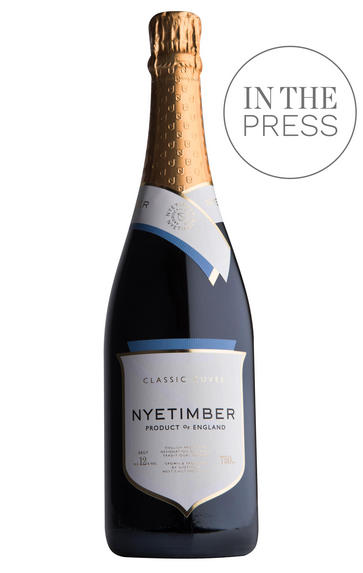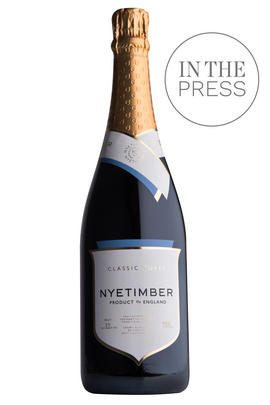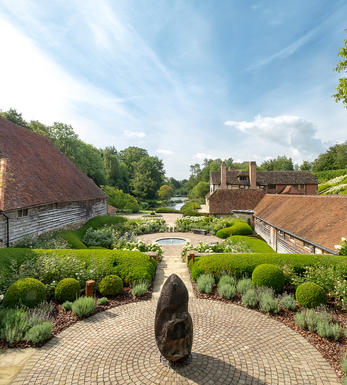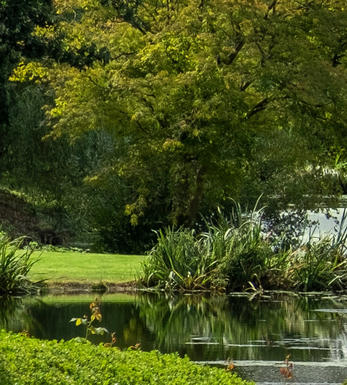
Nyetimber, Classic Cuvée, Brut, Sussex, England

Critics reviews
The Classic Cuvée comes from estate-grown grapes, 30–40% Pinot Noir, 10–20% Pinot Meunier and 50–60% Chardonnay with around 30% reserve wine. This was disgorged in January 2019. It has an attractive bouquet of baked green apples and a subtle leesy note that becomes more prominent with aeration. The palate is pleasantly weighty on the entry, then quite malic, with Conference pears intermingling with Granny Smith apples. Hints of vanilla surface toward the pleasing, easygoing finish. Fine.
Drink 2020 - 2028
Neal Martin, Vinous.com (June 2020)
60% Chardonnay, 27% Pinot Noir, 13% Pinot Meunier. Fruit from West Sussex and Hampshire.
Tiny bead. Tightly focused nose (probably 2018 base). Really interesting, layered nose. Absolutely no excess of acidity at all, so I would guess there is quite a bit of reserve wine in here. Really a standout in terms of balance. I'd love to taste this blind with a similarly priced champagne. Smoky, broad and mouth-filling.
Drink 2022 - 2027
Jancis Robinson MW, JancisRobinson.com (April 2022)
Disgorged in January 2020, the new release of Nyetimber's NV Brut Classic Cuvée is based on the 2015 vintage, complemented by 20% reserve wines dating back to 2009. Offering up aromas of honeycomb, apple blossom, warm pastry, candied peel and nougat, it's medium to full-bodied, seamless and pillowy, with a pretty core of fruit, bright acids and an elegant pinpoint mousse.
Drink 2020 - 2033
William Kelley, Wine Advocate (April 2021)
Doughy yeasty nose with a hint of salinity. The palate is soft and fruit-forward, with some spice and biscuit notes. Great balance and finish.
Drink 2020 - 2024
Susie Barrie MW, Decanter.com (January 2020)
About this WINE

Nyetimber Vineyard
For over twenty five years Nyetimber has had a single aim: to make the finest English sparkling wine, one to rival the very best in the world, including champagne.
A true pioneer, Nyetimber was the first producer of English sparkling wine to exclusively grow the three celebrated grape varieties: Pinot Noir, Pinot Meunier and Chardonnay. Each bottle of Nyetimber is made from one hundred percent estate-grown grapes.
1988, Nyetimber planted its first vines. In 1997 in a blind tasting Nyetimber's 1992 Blanc de Blancs caused a debate as to which area of France it came from. Nyetimber wines have since won rave-reviews and International medals and, have also won the admiration of members of the Royal Family and various Heads of State. Owner and Chief Executive Eric Heerema and winemaker Cherie Spriggs are committed to producing wines of exceptional quality.
Nyetimber Manor is mentioned in the Domesday Book and was once home to Anne of Cleves, fourth wife of Henry VIII. 1,000 years later it is producing one of the finest sparkling wines in the world.

Sussex
Located in southern England, Sussex has emerged as a promising region for wine production in recent years.
The country's cool climate and chalky soil, reminiscent of the renowned Champagne region in France, have created favourable conditions for vineyards to flourish.
Winemaking in Sussex focuses on sparkling wines made from traditional methods using classic grape varieties such as Chardonnay, Pinot Noir, and Pinot Meunier.

Champagne blend
Which grapes are included in the blend, and their proportion, is one of the key factors determining the style of most Champagnes. Three grapes are used - Pinot Noir, Chardonnay and Pinot Meunier.
26% of vineyards in Champagne are planted with Chardonnay and it performs best on the Côtes des Blancs and on the chalk slopes south of Epernay. It is relatively simple to grow, although it buds early and thus is susceptible to spring frosts. It produces lighter, fresher wines than those from Burgundy and gives finesse, fruit and elegance to the final blend. It is the sole grape in Blancs de Blancs, which are some of the richest long-lived Champagnes produced.
Pinot Noir accounts for nearly 40% of the plantings in Champagne and lies at the heart of most blends - it gives Champagne its body, structure, strength and grip. It is planted across Champagne and particularly so in the southern Aube district.
The final component is Pinot Meunier and this constitutes nearly 35% of the plantings. Its durability and resistance to spring frosts make the Marne Valley, a notorious frost pocket, its natural home. It ripens well in poor years and produces a soft, fruity style of wine that is ideal for blending with the more assertive flavours of Pinot Noir. Producers allege that Pinot Meunier lacks ageing potential, but this does not deter Krug from including around 15% of it in their final blends.


Buying options
Add to wishlist
Description
Purity is key in this balanced wine with its citrus core and creamy texture. Mandarin, apricot and almond notes hover in the background and there's a crisp lemony finish to it all, Quite exciting.
Jamie Goode, Sunday Express (April 2023)
For over 25 years Nyetimber has had a single aim: to make the finest English sparkling wine, one to rival the very best in the world, including Champagne. A true pioneer, Nyetimber was the first producer of English sparkling wine to exclusively grow the three celebrated grape varieties: Pinot Noir, Pinot Meunier and Chardonnay. Each bottle of Nyetimber is made from 100% estate-grown grapes.
This sparkling wine has a fine mousse that enhances the toasty, almond and honey notes. The acidity is poised and provides the perfect foil to the baked apple and spice on the palate. Perfect served chilled as an apéritif, but also good with lighter starters, shellfish or poultry.
Berry Bros. & Rudd
wine at a glance
Delivery and quality guarantee